Al-Subiyah (Kuwait)
Mugheira / Al-Subiyah 2007
THE KUWAITI-POLISH ARCHAEOLOGICAL MISSION
Dates: November 4 – December 6, 2007
Team:
Assist. Prof. Piotr Bieliński – director (Institute of Archaeology, University of Warsaw)
Dr. Łukasz Rutkowski – field director (Polish Centre of Mediterranean Archaeology, University of Warsaw)
Dorota Bielińska – archaeologist (Research Centre for Mediterranean Archaeology, Polish Academy of Sciences)
Andrzej Reiche – archaeologist, photographer (National Museum in Warsaw)
Dr. Zuzanna Wygnańska – archaeologist (Polish Centre of Mediterranean Archaeology, University of Warsaw)
Łukasz Wojnarowicz – student (Institute of Archaeology, University of Warsaw)
In November 2007, a six-strong archaeological mission from the PCMA, led by Prof. Dr. Piotr Bieliński, headed for Kuwait to undertake the first Polish archaeological research in this country. Polish scientists had been invited by Kuwaiti authorities and entrusted with the task of conducting surveys and excavations in an area north of Kuwait City where a new metropolis is to be erected. The research is of special importance since, with the exception of Failaka Island, Kuwaiti territory has hardly been the object of archaeological investigations. Therefore the offer to pioneer the work was a very welcome challenge for Polish archaeologists.
Desert Burial Site
Based upon a survey carried out during the first week of fieldwork, a spot was selected for excavation. The choice fell upon a sepulchral site in the As-Sabbiya region located about 60 km north of the capital and roughly 40 km from Iraq’s southern border. Its potential historical significance stems from its proximity to the estuary of the Euphrates and the Tigris. After all, these two rivers were among the most important trade routes in antiquity, because they connected the Indus Valley and lands of present-day Oman with the heartland of Mesopotamian civilization.
As-Sabbiya is a narrow expanse of desert bordered on the south by the waters of the Persian Gulf and on the north by the Jaal ez-Zawr hills. Within it, an over 20 km long strip of land is scattered with archaeological sites. Our survey was limited to an area of about one square kilometer. Still, 15 burial sites were recorded and the total number of sites in this area was estimated at a few dozen.
A concentration of stone tumuli on the rocky plateau of Mugheira was chosen for excavation. This plateau rises some 10 m above the level of the seashore plain which is made up mostly of salt marshes. The center of the plateau is cut by a sizable ravine running NW–SE, possibly formed by the waters of an ancient river or by the sea. More cracks and crevasses cut the plateau from west to east.
Graves in the form of tumuli were erected on small patches of flat land between these ravines. They were situated near the edge of the plateau, in places that afforded a good view of the surrounding plain. This seems to have been an important part of the burial customs.
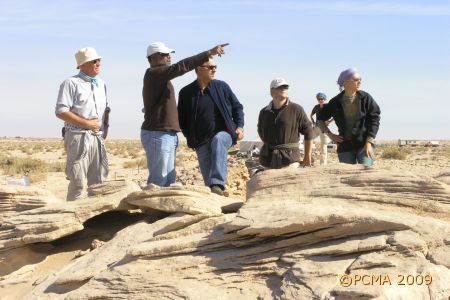
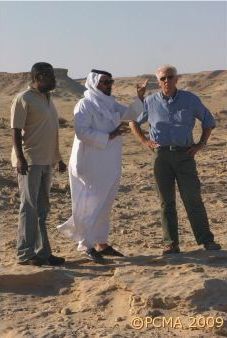
Pearl in a heap of stones
Three tumuli were excavated (SMQ 30, SMQ 31, SMQ 32). These structures, built of large stones placed concentrically on bedrock, are about 1 m high and 6 m in diameter. In the centre of each tumulus, there is a small rectangular or oval chamber covered with a large stone slab.
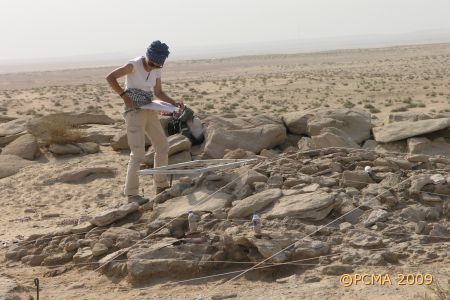
The first of the excavated tumuli (SMQ 30) yielded the most information. Human remains and personal adornments were found inside its chamber. It was a secondary burial, that is, the bones were deposited only after the flesh had fallen away from them. Several dozen pieces of ornamental objects were placed in the grave along with the bones. Among the most valuable were a mother-of-pearl pectoral decorated with engraved, concentric circles, lapis-lazuli beads and a pearl. This last item drew the most attention as it is a truly unique find – pearls fished out of the Gulf are seldom found in archaeological contexts and this was the first discovery of the kind on a Kuwaiti site. The same grave yielded beads made of shell and stone, as well as small, perforated shell plaques which may have been sewn onto clothing.
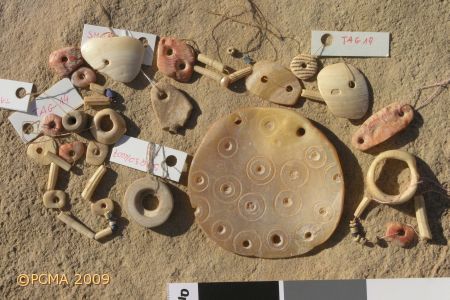
Ornaments were also found between the stones covering the grave. Although it is possible for the beads to have been both inside and outside the grave when the bones were being moved to the secondary resting place, it seems just as likely that their distribution was intentional. It may bear witness to some kind of burial rite, during which the dead person’s belongings were scattered inside the grave and on top of it. In any case, the wealth of finds points to the status of the buried person who must have been a high-ranking member of the community.
Scant dating material
The dating of these burials remains an open question. More data is needed to give a definite answer, although some of the ornaments found in the grave provide us with a clue. For example, lapis-lazuli was most popular in the second half of the 3rd millennium BC. The decoration on the pectoral also hints at the end of the 3rd millennium BC; similar ornaments can be found on stone vessels coming from sites in the Gulf region dated to this period. Therefore, 2300-2000 BC is a tentative date for the excavated tumuli.
The other two tumuli (SMQ 31, SMQ 32) were empty. Perhaps they had been robbed, but it also seems possible that they had served as temporary burials which, after a set time, were emptied. Similar practices have been observed among contemporary nomadic peoples.
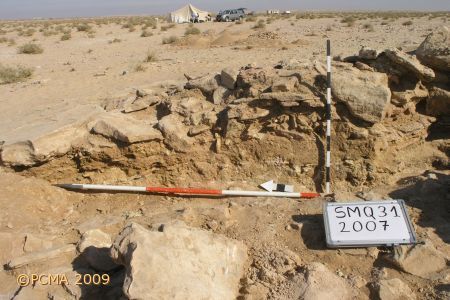
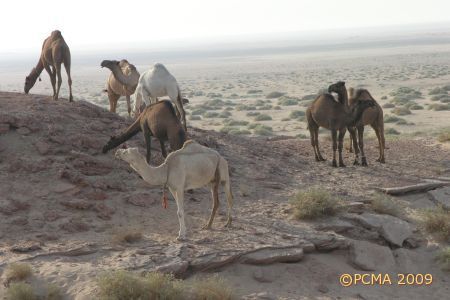
Modest nomads or enterprising merchants
The identity of the tumuli-builders of As-Sabbiya is difficult to establish. Several features suggest that they may have been nomads. Firstly, no permanent settlements have been discovered in the vicinity. Secondly, the region of As-Sabbiya with its desert vegetation provides excellent pastures and probably did so also in the past. And finally, the burials themselves – stone tumuli situated in a desolate area – have numerous parallels in nomadic cultures from other regions. Also the secondary character of burials points to nomads. People who are constantly on the move bury their dead in provisional tombs only to move the remains later to a new grave. The mutual closeness of many of the tombs built on the Mugheira plateau supports the assumption that they belonged to members of one family or tribe.
The luxurious grave goods from SMQ 30 hint also at the possibility of contacts between the ancient people of As-Sabbiya and merchants who imported prized ornaments and materials. The nomads may have further traded in these imported wares themselves. Perhaps an unknown branch of the Gulf–Mesopotamia trade route passed through this region.
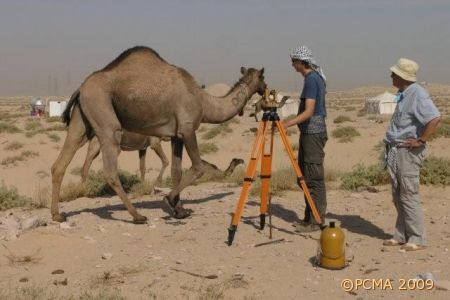
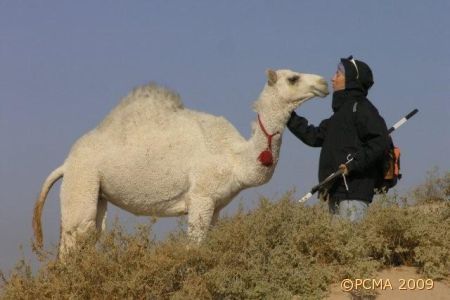
(Text: P. Bieliński)
